
An attorney defending the Oklahoma’s charter school board wasted no time identifying the primary issue before the Oklahoma Supreme Court.
“This is whether the operation of a charter school violates the establishment clause,” said Philip Sechler, representing the Oklahoma Statewide Virtual Charter School Board.
The board’s approval of St. Isidore of Seville Catholic Virtual Charter School last year catalyzed a controversy in the Sooner State that could pave the way for the nation’s first religiously affiliated charter school. That means the case has national ramifications and could reach the U.S. Supreme Court.
The high court sidestepped the issue when it declined last year to review a 2022 appellate court decision that said charter schools were state actors. Other federal circuits have issued conflicting decisions.
Experts have said Oklahoma Attorney General Gentner Drummond’s lawsuit to stop St. Isidore could bring the issue of public schools operated by religious groups back to the nation’s high court to settle.
On Tuesday, the Oklahoma Supreme Court took center stage for a case that has split the state’s top Republicans and frayed relationships within the diverse national charter school movement.
Drummond argued that St. Isidore is a public school and is subject to the same rules as the state’s other charter schools, which include being non-sectarian and tuition-free for families.
Yet in its application to open a new school, it “promises to be “Catholic in every way, Catholic in teaching and Catholic in employment.” Drummond added that the school requires the principal to be a practicing Catholic, while the state’s public schools cannot limit hires to members of one faith.
The Oklahoma Catholic Church and the state, he said, “have formed an actual union” that “eviscerates the separation of church and state” and violates Oklahoma’s constitution and charter school laws. While the U.S. Supreme Court may very well decide someday that public schools can be religious, the state court is limited in this case to a decision based on state law.
Attorneys for the statewide charter authorizer and for St. Isidore, which is intervening in the case, argued that the state does not control charter schools, as Drummond argued. Charter schools are public schools designed to be run by private organizations given autonomy to foster innovation.
“It has its own facilities, its own bank account, its own ability to raise funds and enter contracts in its own name,” Sechler said. “Being a public school does not make St. Isidore a state actor.”
Sechler also pointed out that charter schools hire their own staff, design their own mission statements and academic programs, and determine their own teaching methods. He added that no student is required to attend charter schools.
He said that operating under a state contract said, “does not make it a part of the government.”
Justices peppered the attorneys with questions throughout the arguments, including why using government funds to pay religious hospitals and allowing state scholarships to be used for religious colleges were constitutional.
When justices asked about the recent trilogy of U.S. Supreme Court decisions that struck down bans on religious schools’ participation in state school choice programs, Drummond said those organizations were private, with funding going to families who could choose where to spend it. Justice Dana Kuehn asked if public religious schools should be allowed as counterweights to secular public schools that “expound [ideologies] outside ABC and 123.”
“Does that open the door for a charter school to have a religious component if the public school has an anti-religious component?” she asked.
Justice Yvonne Kauger expressed concern that a U.S. Supreme Court decision in favor of religious charter schools would open the door to many religious organizations seeking to open publicly funded schools.
“When this all comes down – Katie bar the door – everybody would be affected,” she said. “Are we being used as a test case? It sure looks like it.”
St. Isidore attorney Michael McGinley assured the court that St. Isidore was not intended to be a test case but instead was an effort to meet the needs of families. He said many students in rural areas live too far away from in-person Catholic schools.
The state’s existing school choice scholarships, he added, won’t cover the entire cost of education, leaving low-income families to make up the difference. A charter school would solve that problem.
“Voucher programs are wonderful,” he said, “but they’re not perfect.”
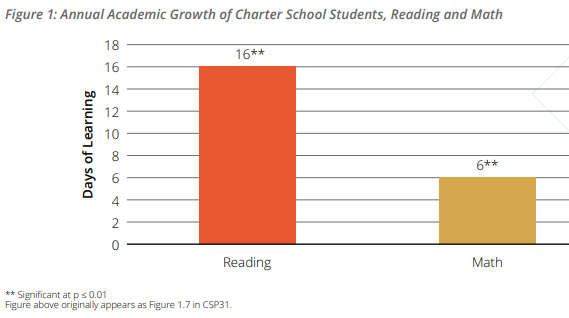
On this episode, senior writer Lisa Buie talks with Nina Rees, president and chief executive officer of the National Alliance for Public Charter Schools. Founded in 2005, the alliance’s stated mission is to ensure all children have access to a high-quality public education regardless of their ZIP code.
Rees discusses the recent study by the Center for Research on Education Outcomes, also known as CREDO, that showed over time, charter schools outperformed district-run schools in their communities and narrowed the achievement gap.
“If there was ever a doubt as to the effectiveness of charter schools, in their ability to close the achievement gap, this study definitely proves that gap can be closed and it's just a matter of doubling down and investing more in building these great schools in more places.”
Rees also discussed Oklahoma’s recent approval of St. Isidore of Seville Catholic Virtual Charter School, which, if it survives

Nina Rees
a court challenge, would be the nation’s first religious charter school.
Rees’ organization issued a statement disagreeing with the decision, arguing that the law has established that charter schools are public schools therefore required to operate as secular institutions. A coalition that includes Americans United for Separation of Church and State, the American Civil Liberties Union and the Education Law Center filed a lawsuit challenging the virtual charter school, which is set to open in 2024.
Episode details:
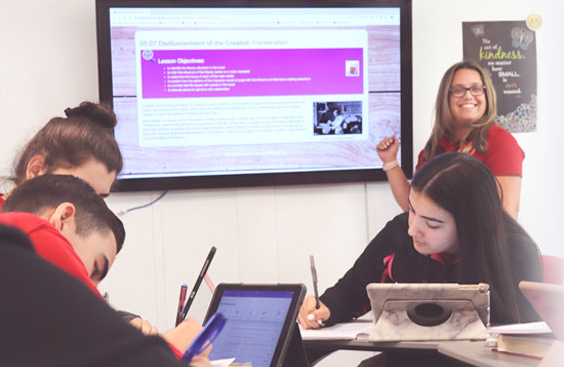
Archdiocese of Miami Virtual School, owned and operated by the Archdiocese of Miami, offers full- and part-time enrollment, introducing students to Catholic virtues and principles while enhancing learning for participants across the country.
When Florida Gov. Ron DeSantis signed HB 1 into law, he praised it as “the largest expansion of education choice not only in this state but in the history of these United States.” During committee hearings, lawmakers called it “transformational.”
The sweeping legislation extended eligibility for the Sunshine State’s 20-year-old school choice program to every student regardless of income. It also gave parents more control over their children’s education by converting traditional scholarships to education savings accounts.
The accounts, called ESAs, allow funds to be spent on pre-approved uses such as curriculum, digital materials, and tutoring programs in addition to private school tuition and fees.
But despite the greater opportunities for customization, one thing was not included: religious virtual schools. Under the new law, students may use funds to attend non-sectarian virtual schools, such as Florida Virtual School, and traditional in-person religious schools, but not a combination of the two.
That language means that schools such as Archdiocese of Miami Virtual Catholic School and Families of Faith Christian Academy International, which offers a private virtual school option, are excluded from participating in the state’s K-12 education choice scholarship programs. However, families who are using personalized education plans under HB 1 are allowed to use ESA funds to buy curriculum from ADOM Virtual Catholic School, even though they can't use the money to enroll at the school.
The Lakeland-based school is working on passing inspections for a campus on property owned by Epic Church, according to its website. Students who attend the in-person campus full time will be able to use scholarships. Before the pandemic, the school offered a blend of traditional and home-based instruction for homeschool families.
However, when Covid-19 made online education more popular, the school focused more on its virtual offerings.
Jim Lawson, the administrator at Families of Faith, hopes that closing the loophole will be on the lawmakers’ list when the 2024 session begins.
“With all the good that is included in HB 1, which we support, the Florida Legislature has continued to limit a wide range of high-quality educational options,” said Lawson, administrator for Families of Faith, who co-founded the school in 1994 with several other homeschool families.
“Parents can choose a high-quality campus-based program that aligns with the academic needs of their students while not conflicting with their faith. But they are not given the same choice to choose a high-quality accredited virtual program for a faith-based private school. The foundational principle of school choice is to have the same menu of options that families who choose the public school system, which includes FLVS, available to them from the private sector.”
Jim Rigg, superintendent of schools for the Archdiocese of Miami, which has a virtual Catholic school that offers full- and part-time programs, has a similar perspective.
“We favor efforts that maximize the ability of families to choose the school that best fits their child’s needs,” Rigg said. “This would include faith-based virtual schools, such as the ADOM Virtual School used by hundreds of students throughout Florida and across the world.”
Some say the language puts HB 1 in conflict with the First Amendment’s free exercise clause cited in recent U.S. Supreme Court decisions Espinoza v. Montana and Carson v. Makin, which forbade Maine and other states from discriminating against religious schools in state education choice scholarship programs.
In Espinoza, the high court ruled that a state “need not subsidize private education” but that once it “decides to do so, it cannot disqualify some private schools solely because they are religious.”
In Carson, the high court ruled that states could not ban faith-based schools from participating in state scholarship programs because the schools engage in religious activities. The case involved town tuition programs offered in some Northeastern states that offer students in rural areas funding to attend private schools where there are no district high schools.
“Likewise, a state need not subsidize families choosing virtual learning, but once it decides to do so, it cannot disqualify some virtual learning providers solely because they are religious,” Jason Bedrick, a research fellow at the Heritage Foundation’s Center for Education Policy, wrote in a recent analysis.
Shawn Peterson, president of Catholic Education Partners, a national organization that promotes greater access to Catholic education, agreed, saying that although he applauds the passage of HB 1 and welcomes the wealth of options it offers, he hopes to see some changes.
“We hope that lawmakers om the Sunshine State will fix the legislation to ensure that all providers to ensure that all providers can participate in the new program,” he said.
Bedrick urged lawmakers to tweak the bill by inserting language clarifying that notwithstanding any other provision in Florida statute, families using education savings accounts may choose virtual providers that offer religious or secular instruction, and that the language should specify that virtual learning counts toward regular attendance regardless of whether students are enrolled in brick-and-mortar schools.
“Florida has an opportunity to reclaim its mantle as the leading state for education freedom and choice,” Bedrick wrote. “With just a few small but important tweaks, the Sunshine State could adopt a policy on universal education choice that will be a shining example for other states to follow.
Any tweaks will have to wait until the 2024 legislative session, which begins Jan. 9.

A new array of Florida Virtual School courses features a mix of core and electives, including career and technical education, Advanced Placement, world languages, math, and science. Artificial Intelligence in the World is one of four new career and technical education classes.
Editor’s note: This news release was provided by Florida Virtual School. To listen to a reimaginED podcast interview with FLVS senior manager for curriculum development Amy Heflin, click here.
As the world races toward an artificial intelligence-driven future, Florida Virtual School unveils one of the first AI programs of study, a progression of industry-focused classes, for high school students. The first course, Artificial Intelligence in the World, is now open for enrollment.
Plus, the school announced nine additional new courses with an emphasis on electives that enable students to discover their passions and interests before heading off to college and/or the workforce.
The AI industry is expected to experience a steady job growth of 37% between 2023 and 2030 and currently, more than 77% of the world’s population uses an AI-powered device or service.
“Our hope is that our AI courses will encourage students to embrace rather than fear AI,” said Amy Heflin, senior manager, curriculum development. “But more importantly, it is imperative that we teach students about how to use AI appropriately and ethically.”
The new Florida Virtual School courses are a mix of core and electives, including Career and Technical Education (CTE), Advanced Placement, world languages, math, and science to give students the time and space they need to explore what interests them and what they want to do after high school.
The courses are tuition-free for Florida high school students and include:
New career and technical education courses:
Artificial Intelligence in the World. This introductory course will guide students through the concepts, tools, and building blocks of artificial intelligence and provide them with a broad overview of how AI is used in decision-making and problem-solving worldwide. They’ll also have the opportunity to explore the various parts of AI with hands-on activities through the use of chatbots and other interactive elements. This is the first course in the new Artificial Intelligence Foundations program of study.
Foundations of Curriculum and Instruction. Students will get a glimpse of the classroom environment and develop their portfolios, participate in field observations, and observe children of various ages to see firsthand how teachers carry out lessons in the classroom. This course is the third and final in the Principles of Teaching program of study and is an honors-level course.
Hospitality & Tourism Marketing Management. Students will learn marketing and management principles and procedures specific to the hospitality and tourism industry in this course. With the sales, marketing, and entrepreneurship skills necessary to succeed in future jobs, they’ll look to future career opportunities and understand the employment qualifications necessary to embrace them. This course is the third and final in the Hospitality & Tourism Program of Study.
Principles of Entrepreneurship. In this course, students will identify characteristics and traits of entrepreneurs and assess personal strengths and weaknesses for entrepreneurial success. It also outlines the steps in starting a business, the role of the economy in small businesses, the basic principles of marketing, selling, distributing, and financing, and the workforce readiness skills needed to be a successful entrepreneur. This is the first course in the new Entrepreneurship program of study.
New core courses:
Astronomy/Solar Galactic. Students will journey through the universe on a stellar exploration through space and time, and discover ancient astronomy and the instruments used to investigate the properties and motion of celestial objects. They’ll also examine planetary conditions in our solar system and beyond, including experimentation and investigation of the physics of light, the interactions between Earth, sun, and moon in our solar system, the luminosity of stars, and theoretical observations and developments.
Mathematics for College Liberal Arts. Students will explore a range of mathematical concepts and fields, all while connecting ideas to their application in our world. Major topics in this course include linear and exponential functions, geometry in the real world, analysis of data and probability, and the use of functions as models. Logic and theory as they apply to the practical use of mathematical concepts are introduced, giving students an understanding of how the principles of higher-level math connect to everyday life.
Mathematics for Data and Financial Literacy. In this course, students will explore specific math skills to understand how money will impact their life from a personal and a business perspective. They’ll see how properly managing money can lead to financial success and learn how to analyze data to help make decisions.
New Advanced Placement courses:
AP Computer Science Principles. This college-level course is ideal for incoming ninth graders and sets the foundation for learning concepts and challenges of computer science and its impact on society. Students will stretch their creativity and problem-solving skills to build solutions for the issues they find important. They’ll also learn how to design, develop, and evaluate computer programs using algorithms and the JavaScript programming language, and practice analyzing data and simulations to extract knowledge from information.
AP Physics 1. This algebra-based, introductory physics course will guide students through a college-level learning experience. Students will develop an understanding of physics through rich content, engaging activities, and an inquiry-based laboratory. Additionally, they will explore concepts such as analyzing motion, force interactions, energy, rotational motion, and waves. Students who successfully complete this course will be equipped with the knowledge and skills necessary for their next steps in many medical, environmental, or scientific career paths.
New world languages courses:
French 3 Honors. In the French 3 Honors course, students will sharpen the increased listening, speaking, reading, and writing skills acquired in French 1 and 2. Communication remains the main focus through speaking, listening, writing, and reading. Students will dive a little deeper into the francophone culture and apply what they learn through reading, writing, listening, and speaking activities.
To learn more about FLVS Flex, FLVS Full Time, and other options, visit flvs.net/online-school-options.
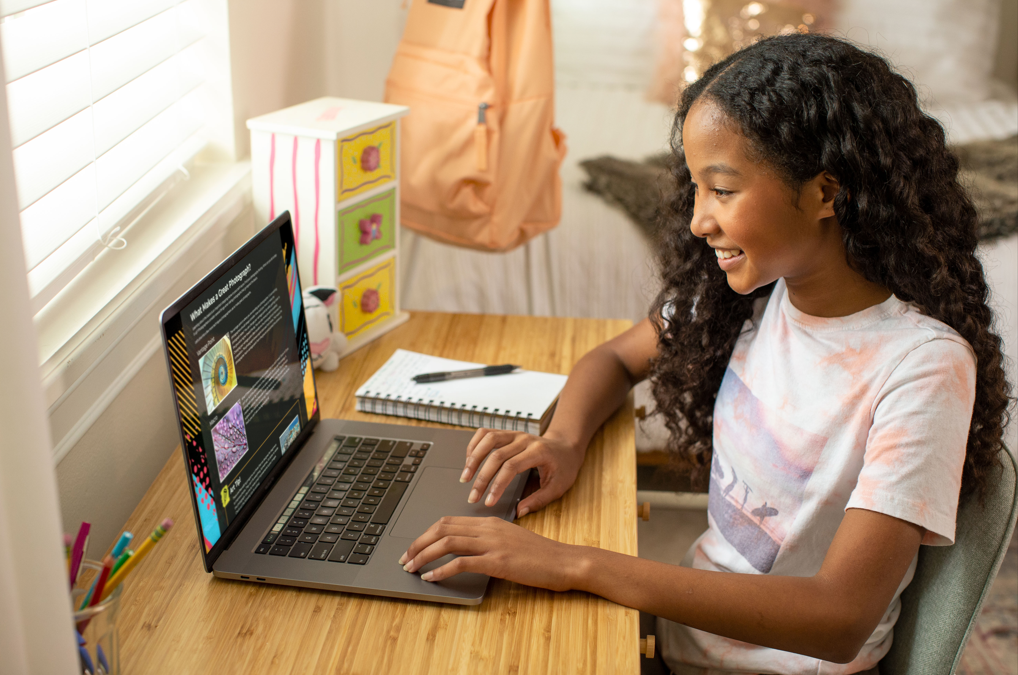
A new offering from Florida Virtual School, Artificial Intelligence in the World, will guide students through the concepts, tools, and building blocks of artificial intelligence and provide them with a broad overview of how AI is used in decision-making and problem-solving worldwide.
On this episode, reimaginED senior writer Lisa Buie talks with Amy Heflin, senior manager for STEM curriculum at Florida Virtual School. Heflin discusses a new high school course program in artificial intelligence and how it will offer students a foundational knowledge of AI and its applications.
Her interview comes a day after FLVS, the nation’s first statewide internet-based virtual school, unveiled its first course, AI in the World, which is part of a progression of industry-focused classes that also include courses in hospitality and entrepreneurship.
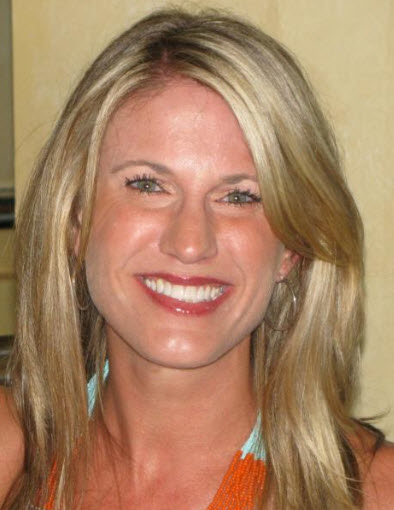
Amy Heflin
“We try to impress upon students that studying AI requires analytical, critical thinking skills, things that we use on a daily basis, and that can be useful in any field. Learning about AI will help students develop their problem-solving abilities. They'll become better equipped to handle complex issues.”
EPIDOSE DETAILS:
Topics and hands-on activities covered in the course
The types of students for whom the course is designed
The role that University of Florida faculty members played in developing the curriculum
How the course fits into FLVS’s overall computer science program, which includes a new AP computer science principles course
Heflin’s desire to help students embrace AI rather than fear it
A sneak peek at the next AI course, Applications for Artificial Intelligence
RELEVANT LINKS:
Florida Department of Education among first to adopt K-12 AI education program
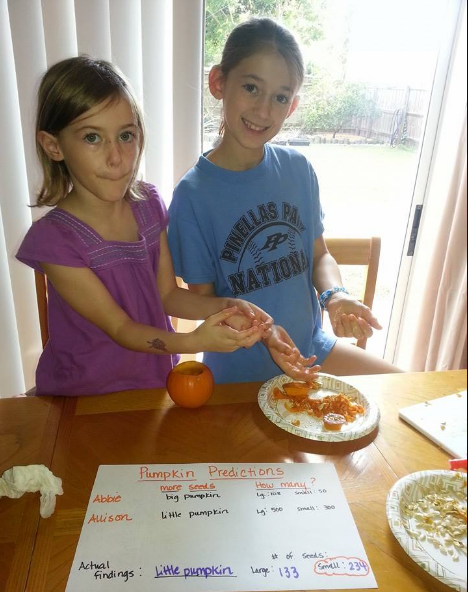
When Melissa Ley’s daughters, Allison and Abigail, now attending St. Petersburg Collegiate STEM High School and St. Petersburg College, respectively, were younger, Ley enrolled them in Florida Cyber Charter Academy, where she now serves on the board.
Melissa Ley left her job as a teacher at a public school to let her daughters learn at home after determining the public schools they attended were not the best fit for them. At the time, Ley’s family didn’t qualify for an education choice scholarship, so she enrolled the girls at a district virtual school.
Things went well until district leaders decided to convert from live lessons to an asynchronous education model – one in which educational activities, discussions and assignments engage students in learning at their own pace, on their own time.
Ley moved her children to Florida Cyber Charter Academy, where she serves on the Florida Cyber Charter Academy board. She has become a fixture at legislative committee meetings and advocates for education choice by writing letters to the editor at the South Florida Sun Sentinel and other newspapers.
Ley shared her story with reimaginED to encourage other education choice advocates looking for the best educational fit for children nationwide. Answers have been edited for clarity and brevity.
Q. Please tell me a little about yourself: What was your own K-12 education like? Did you always want to be a teacher or was it something that you felt called to later, during high school or college?
A. I was born and raised in Florida and attended my zoned schools. I knew in high school I wanted to be a teacher. I worked full time in college and attended college while working. Eventually I decided that since I was already making more as an administrative assistant than I would as a teacher, that I was better off where I was and didn’t finish college.
I worked as a corporate recruiter and trainer for years, and after I had my first child, I started re-evaluating what I really wanted to do, so I left my job and went back to school to get my degree in education.
Q. Please tell me a little about your family. Where do your kids attend school?
My husband of 20 years and I have a 19-year-old daughter, Abigail, who graduated from St. Petersburg Collegiate High School (a charter school) in May of last year with her high school diploma and her associates of arts degree. She is attending St. Petersburg College. My younger daughter, Allison, attends St. Petersburg Collegiate STEM High School. It is a brick-and-mortar charter school that will allow her to graduate with her high school diploma, her associate degree, and two industry certifications. Prior to this, she attended a virtual charter school from kindergarten through eighth grade.
Q. How did you know what learning plan was the best fit for them?
Abigail started in a magnet school and in second grade I started seeing some things that had me questioning whether it was the right fit for her. My daughter started coming home saying she was a terrible reader. She wasn’t. She loved to read and was gifted, but when I asked her teacher why she thought Abigail had this impression, and if she noticed her struggling in small group or during class, the only information she could give me was my daughter’s district test score. She had no running records, no feedback on how she read in class, or during small group instruction, no assessments at all. Just that she failed this one test on this one day, and from it related to my daughter she might not pass the grade.
As a teacher in the district, I knew what was expected of me and the data and instruction happening in my classroom with my own students, and I felt like it wasn’t acceptable that there was no data on my child. She was doing well on her report cards, but when I sat down to do her homework with her, it was obvious that there were some gaps in her learning. I figured it was one year, one teacher. I would work with her to fill in the gaps and it would be okay.
The next year, my younger child was in VPK, reading well above her grade level, and academically excelling, and her teacher suggested she go straight to first grade. But socially, we knew she wasn’t ready to skip a grade. I started researching other options for her. Do I work to pay for a Montessori school, or something that was more flexible and able to accommodate all her needs?
Then a few months into that school year, I decided to homeschool them. When looking into homeschool options, I came across a virtual school, and at the time it was through the district. I fell in love with the curriculum and the ability to school my kids at home and be there and see if there was any remediation or acceleration needed.
Q. What was the reaction when you, a public school teacher, put your children into a non-traditional school?
At first, because we started with a district virtual school, most people didn’t really say much. A few weren’t thrilled that I was “schooling them at home,” but some thought it was amazing. However, when the following year our district virtual school wanted to eliminate the curriculum we were using and the live classes and go to an asynchronous model where a classroom teacher would oversee five virtual school students, we chose to leave and move to a virtual charter school.
Q. Have you always supported education choice and scholarships or was it a view that evolved over the years? If so, what influenced that change?
I have always supported choice, but as with most things, until you personally experience them, you don’t really understand their value. For us, having the option for a virtual charter school was life changing on so many levels. I had no idea the number of people who fought hard for options for students and families or that choosing where you go to school isn’t something that is accessible to everyone.
Living in Florida, we are really privileged with the number of options we have, and I had no idea that this wasn’t the case everywhere. As my own choices were being threatened, I got involved in advocating for choice and realized often those making the decisions to close my school or limit enrollment didn’t understand even the basics of how our school was run.
For example, I spoke to many school board members who had an opinion on the virtual school we attended, but had no idea we had live classes with teachers and students. They kept saying “you mean video recordings.” I also found out they often didn’t know how their decisions impacted those utilizing the school. I also did not realize that those choices are often still threatened and can be taken away.
Q. Please describe your role at Florida Cyber Charter Academy.
I am a board member for Florida Cyber Charter Academy. It is my job to make sure the staff is meeting the needs of the students and families and making sure they are adhering to their charter contract, as well as making sure they uphold all federal, state, and local laws and regulations.
Q. What has inspired your activism when it comes to education choice? Did you start with newspaper letters to the editor or were you engaged in other advocacy as well?
I was asked to be on the board as a parent liaison by one of my daughter’s teachers since I was a very active parent in the school. When I joined the board, I realized that the district was trying to eliminate our charter, and this would leave thousands of kids without the choice that was working best for them, my kids included.
At that time, I started working with the board and the district to try to educate them on how our school really worked and the impact it was having on these families. I served as board chair for a few years, and currently serve as a board member. Then I got involved by writing letters, visiting and speaking with our state and national legislators. I also work closely with other parents to help them learn how to advocate.
Q. What do you think of the education choice expansions in Florida? What about other states, particularly those that have adopted greater spending flexibility in the form of education savings accounts?
Florida has always been a leader in school choice, but with nearly half of Florida’s students utilizing an educational option outside of their zoned brick-and-mortar public school, the Legislature must continue to expand learning options and not roll back options for families. I think we should look to states like Arizona, which has adopted universal ESAs, and to Colorado, which has tons of effective online learning options.
Q. Do you think ESAs would benefit Florida and if so, how?
I do think ESAs will benefit Florida. Many families simply lack the financial resources to pursue other options. Private or homeschooling options are expensive. Other families like ours have made financial sacrifices to shoulder the expense of private school tuition or have given up a parent's income to school at home. If the money follows the student, this opens more options for families and helps alleviate the financial strain on families.
Q. What do you see as the future of education?
I think the future of education can be exciting if we work together to provide options and support to teachers, students and families. The more educated we are as a society about education options, laws, and funding, the stronger we can make opportunities for our children.

Mary Mitchell is a National Board Certified Teacher who has been recognized as a Teacher of the Year for Florida Virtual School, the United States Distance Learning Association and Discovery Middle School in Orange County, Florida.
On this episode, reimaginED senior writer Lisa Buie talks with Mary Mitchell, an award-winning educator at Florida Virtual School. Mitchell, who started teaching in 1998, was among the first to join the faculty at the state’s premier online public school and wrote one of its earliest biology courses.
She has seen many changes over the past 2 ½ decades. Mitchell talks about the early days when dial-up access was the only delivery option and students contacted their teachers through pagers. Home visits for exams were the norm, with teachers sometimes being invited to stay for dinner.
Since then, FLVS enrollment has grown to 239,000 full- and part-time students in kindergarten through 12th grade. The school enrolled 244,000 students at the height of pandemic.
Mitchell also shares her secrets about how to engage students online and how education can be personalized.
“It just seemed like the next natural move when Florida Virtual School opened up and I was really excited at the opportunity to deliver K-12 curriculum online … So I had a lot of creative ideas and started writing the biology course and just wanted to be a part of that excitement of something new and taking technology to the next level for students.”
EPISODE DETAILS:
RELEVANT LINKS:
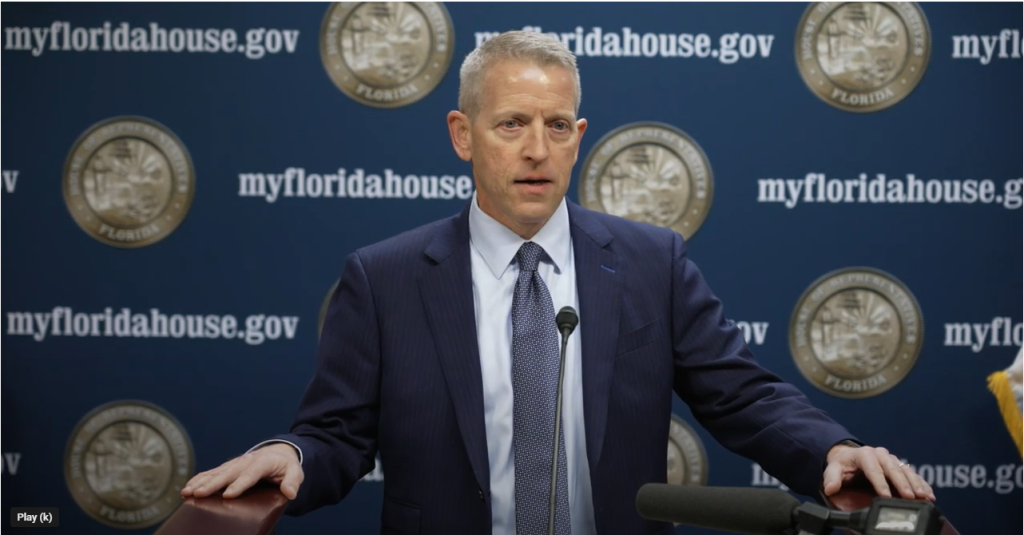
Florida House Speaker Paul Renner answers questions about HB 1, which would expand education choice eligibility to all K-12 students and allow for customization. Photo courtesy of Florida House YouTube channel.
Editor's note: Last week, Florida House leaders announced the filing of HB 1, a landmark bill that would expand education choice and customization to all students in the state through the availability of education savings accounts. If passed, the bill would also allocate enough funding to aid all students currently waiting to be awarded ESAs through the Family Empowerment Scholarships for students with Unique Abilities program. Here are excerpts from House Speaker Paul Renner’s remarks at a news conference. You can watch the event in its entirety here.
As I reflect on the bill we file today, I’m reminded that every single child in this state and this nation grows up with dreams, and as we celebrate Martin Luther King this week, I’m reminded of his dream that every child would one day reach their full potential.
Today’s bill is about doing exactly that and making sure every child in Florida reaches their full potential educationally. And on a more fundamental level, it’s really about freedom and opportunity.
And so today, we empower parents and children to decide the education that fits their needs. And one of the things I’m most excited about is that we currently have a waitlist for children with unique abilities. And it is a tragic thing for a parent to have to say no to their children to have the resources they need in this situation…this bill will completely clear the waitlist for our children with unique abilities.
I think you’re going to see bipartisan for his bill. Maybe I’m going out on a limb, but I don’t think so. I think people realize more and more how powerful it can be. Look, every business, everywhere we shop, has an entrance and an exit except in our public schools, traditionally, where you have to go to the school wherever you’re zoned for and that’s it, whether that school meets your needs or doesn’t meet your needs.
And we have great public schools. There are many people looking to hit the entrance into public schools…. but every school, like every business, should have an entrance and exit. And if the schools are performing well, more people will hit the entrance. If they’re not, more people can hit the exits.
And this bill in a powerful way provides both an entrance and an exit to all of our schools so we can match people up in the best way possible.
And the ESA component to the bill allows choice within choice, so that you can truly get to the goal of customized education.
Even brothers and sisters learn differently. Some are good in math; some are good in English. And this allows, as we look toward the choice navigator, to give advice and counseling, not dictates, but advice on based on scores, based on what’s going on in that child’s life which the parent uniquely knows, to further enhance and customize that child’s experience so we get the maximum potential out of every single child in the state.
I grew up and went to traditional public school my entire time. I got a good education. My mother was a public-school teacher. Many people will stay right where they are because they’re happy. But this is really about making sure there is increased competition and always striving to do better.
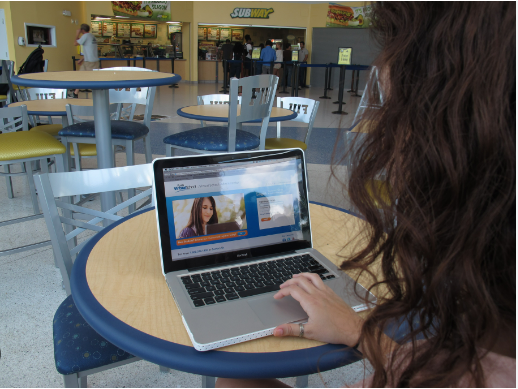
When the coronavirus pandemic hit in 2020, Florida Virtual School came to the rescue of students beyond those in the Sunshine State, jumping at the opportunity to partner with more than 160 new schools and districts. One of the world’s leading online learning providers, FLVS now serves more than 240,000 students.
Editor’s note: This article appeared Monday on the74million.org.
Kristy Maxwell realized something had to change the day she picked her son Levi up from school and found out his teacher had left the autistic kindergartener alone crying and throwing pencils from under his desk.
The Michigan mom switched her son to a school that had a good reputation serving students with disabilities, but things didn’t improve. Because Levi was a “math whiz,” staff ignored his trouble socializing and his difficulty handling the cafeteria’s loud noises, Maxwell said.
Meanwhile, she was unsuccessful in lobbying the school to screen her child for autism, a way to secure the extra services required by law for students with disabilities. The mother worried her son might never get the learning support he needed.
Then, in March 2020, the pandemic shifted all classes at his school online and forced the family into an accidental experiment in a new model of education.
During remote school, Levi could get one-on-one attention sitting next to his mother, who had to temporarily stop her work as a massage therapist due to COVID. His younger sister, who struggles with anxiety, could take breaks to pet the family’s dogs.
“When everything shut down and we were forced to go virtual … my two younger kids did really well,” Maxwell said. “We decided after doing that, since the younger two kids did so well outside of a brick-and-mortar [school], keeping them virtual would be the best way to help them academically.”
The Maxwells, whose three kids are now 9, 11 and 15, are among the thousands of families across the U.S. that tried virtual learning for the first time during the pandemic and are now staying with it.
New data indicate that online schools have had a staying power beyond the pandemic that few observers suspected. While some virtual academies have operated for decades, they saw a well-documented enrollment explosion in 2020-21, the first full school year after COVID, as many virus-wary parents looked to protect their children from infections and anti-mask families sought a way out of face-covering requirements.
But in the following year, even as brick-and-mortar schools fully reopened and mask mandates fell, remote schools mostly maintained their pandemic enrollment gains — and in many cases added new seats.
To continue reading, click here.
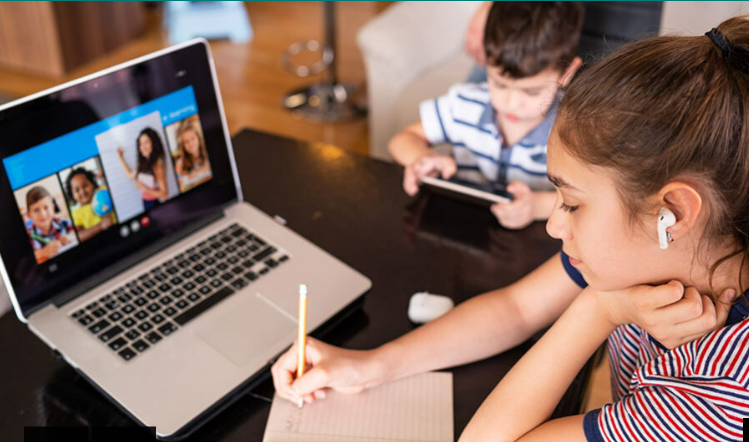
Pecos Cyber Academy in Edgewood, New Mexico, is a free, public, online and virtual school that launched in 2016 as another choice for the state’s families. The academy opened with seven employees and 250 students and has grown to serve just under 2,000 students in kindergarten through 12th grade.
Editor’s note: This first-person essay from New Mexico mother Ashley Guerra was adapted from the American Federation for Children’s Voices for Choice website. You can learn more about Guerra’s family and her education choice journey by listening to a reimaginED podcast at https://nextstepsblog.org/2022/10/podcasted-new-mexico-siblings-enjoy-customized-education-thanks-to-multiple-choice-mom/.

Ashley Guerra
Education has always been a priority in our family. I was raised to value opportunities and work diligently to pursue areas that would allow me to contribute successfully to our community. As I grew up and became a mother, education remained an integral component of my life and a central focus in our family.
But our educational journey was interrupted when I was unexpectedly diagnosed with acute lymphoblastic leukemia during the summer between my son’s kindergarten and first grade years. Because of the aggressive nature of my specific type of leukemia, the intensive treatments would last for years, and we knew we needed to identify a new school model for our son.
We needed an educational environment to help him learn and keep me safe while my treatments continued. We were grateful to discover a new virtual public charter school, Pecos Cyber Academy, and enrolled him in this program.
We discovered this brand-new virtual public charter school that could be attended from anywhere, including our home in New Mexico, from a local public television commercial. The school featured a state-certified and nationally recognized curriculum that gave us access to incredibly talented, knowledgeable, and experienced certified teachers.
We chose this option because we felt confident it would provide our son with an excellent academic experience while ensuring he achieved the academic progress expected of him and his peers. We also were impressed with the flexibility it provided us to work around my treatment requirements and medical appointments.
Our son completed five years at Pecos Cyber Academy. In the years that followed, our daughter attended, and she now is starting her sixth year. Witnessing our children develop areas of specific interest, identify their subject strengths, learn personal accountability, and develop resilience in their learning process has been a true joy.
As Nelson Mandela said, “Education is the most powerful weapon you can use to change the world.” Each child is unique, their circumstances are distinct, and our education system should empower all to capitalize on their potential.
Providing academic options enables families to select for their children the school that will create the greatest opportunity to learn, grow, and become contributing members of our society. I believe that families should have the opportunity to seek out the best education option for their children and their circumstances.
The power to select your child’s educational structure creates equity in education and competition within the school system. As educational entities evolve through various academic models, school systems will promote even newer education models to their communities.
This will allow families to access a uniquely specific school program, resulting in a relationship of accountability and partnership between the school institution and the family/child. With this model, everyone wins – students, families, teachers, and the community.
We are grateful for this educational option and the positive results we’ve seen in our children’s academic learning, growth, retention, and enjoyment in the learning process.